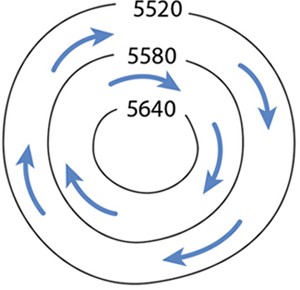How do the effects of nutrients in upwellings compare to the effects of nutrients from agricultural runoff?
A) Both negatively impact marine ecosystems by causing hypoxia as a result of eutrophication.
B) Nutrients from agricultural runoff tend to positively impact marine ecosystems by delivering nutrients that support healthy levels of marine productivity, while upwellings tend to harm marine ecosystems by causing hypoxia as a result of eutrophication.
C) Upwellings tend to positively impact marine ecosystems by delivering nutrients that support healthy levels of marine productivity, while nutrients from agricultural runoff tend to harm marine ecosystems by causing hypoxia as a result of eutrophication.
D) Both positively impact marine ecosystems by delivering nutrients that support healthy levels of marine productivity.
C
You might also like to view...
The new National Standard for Spatial Data Accuracy (NSSDA) does not stipulate threshold accuracy values that GIS data producers must achieve.
Answer the following statement true (T) or false (F)
The Convention on Biological Diversity has goals that ________
A) spell out future management plans for all biomes B) include a set of international laws C) require biodiversity be used in a sustainable manner D) ensure the distribution of biodiversity's benefits to wealthy countries who can pay for them E) are designed to reduce biodiversity
The isohypses portrayed here show
A. high pressure, southern hemisphere. B. low pressure, northern hemisphere. C. low pressure, southern hemisphere. D. high pressure, northern hemisphere.
During the day along the coast, the wind tends to blow toward the ________ because ________
A) water; water heats more rapidly than land B) water; water heats more slowly than land C) land; land heats more rapidly than water D) land; land heats more slowly than water E) areas of highest pressure; land and water have very similar specific heat